Native Plant Garden
The Native Plant Garden is located adjacent to the American River Parkway Foundation office, better known as the “Streng Volunteer Center,” at 5700 Arden Way in Carmichael, CA within William B. Pond Park. It consists of six zones with different plant species native to the American River Parkway.
History
In 2007, with the help of the Sacramento Suburban Water District and Carmichael Water District, the American River Parkway Foundation created a Native Plant Demonstration Garden. The garden consists of plants native to the American River Parkway and the greater Sacramento Region with a strong emphasis on water conservation.
Thank you to Topia Concepts Landscape Architecture, NeoTeric Design Group, and Grounded for graciously donating their services to transform our garden.
Purpose
A native plant garden conserves water and promotes the beauty of our natural ecosystem. Many of the plants native to the Sacramento Region are adapted to long periods of drought and intense heat. Visitors are encouraged to explore the garden and observe various native plant species, which can also be utilized in residential landscapes.
Benefits of Native Plant Gardens in our area:
- Reduces water consumption in residential areas and decreases utility costs
- Supports the native wildlife of our region
- Reduces water withdrawals from the American River watershed
- Promotes the beauty of native California plants
- Limits the spread of invasive plants within the Sacramento area
- Reduces the amount of chemicals, fertilizers, and pesticides used in traditional landscaping
During the garden remodel of 2021, the Foundation added interpretive panels for people to learn about the plants as well as the American River Parkway. Take a stroll through the garden, grab a seat under the shade of an oak tree and enjoy the flowers, bees and quiet of the garden.
Native plants in the garden include:
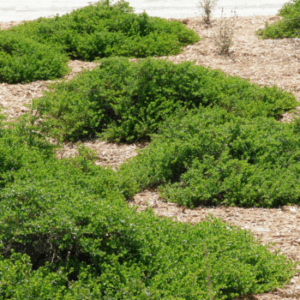
Dwarf Coyote Brush – a small shrub with small green leaves with small white flowers at the ends.
Scientific name: Baccharis pilularis
Coyote Brush (Baccharis pilularis) · iNaturalist
Zones: 5 and 6

Dark Star CA Lilac – a compact shrub with small dark green leaves. This plant blooms in spring with dark blue flower clusters.
Scientific Name: Ceanothus ‘Dark Star’
Dark Star Mountain Lilac, Ceanothus Dark Star (calscape.org)
Zone 3

Howard McMinn Manzanita – a medium sized shrub with bright green leaves. Blooms in late spring with pink flowers.
Scientific Name: Arcotostaphylos d. ‘Howard minn’
Howard Mcminn Manzanita, Arctostaphylos densiflora ‘Howard Mcminn’ (calscape.org)
Zone 5

CA Grey Rush – a perennial plant that grows in narrow bunches of stems. Blooming in the summer, this plant has many small flowers.
Scientific Name: Juncus patterns
Spreading Rush (Juncus patens) · iNaturalist
Zones 5 and 6

Carmel Creeper – a flowering shrub with small blue or purple flowers.
Scientific Name: Ceanothus griseus
Carmel Ceanothus (Ceanothus griseus) · iNaturalist
Zone 3

Ray Hartman CA Lilac – an evergreen shrub with blue colored flowers. This plant flowers in the winter and spring and doesn’t need a lot of water.
Scientific Name: Ceanothus ‘Ray Hartman’
Ray Hartman Ceanothus, Ceanothus ‘Ray Hartman’ (calscape.org)

Heatwave Salvia – this herbaceous perennial plant blooms throughout the summer and autumn. The flower of this plant can include many shades of red and pink with small green leaves.
Scientific Name: Salvia greggii
Autumn Sage (Salvia greggii) · iNaturalist
Zones: 2 and 6
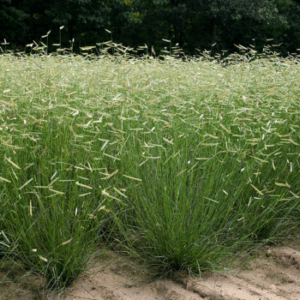
Gramma Grass (blue Grama) – this perennial grass is a green or greyish color. It is drought tolerant and is a low maintenance grass.
Scientific name: Bouteloua gracilis
Blue Grama (Bouteloua gracilis) · iNaturalist
Zones: 1, 2, 5 and 6

Ground Cover Manzanita – an evergreen shrub with clusters of lantern shaped white to pink flowers during spring. The lantern shaped flowers turn into bright red berries in the fall.
Scientific name: Arctostaphylos uva-ursi
Arctostaphylos uva-ursi (Bearberry) (gardenia.net)
Zones: 1, 3, 4 and 5
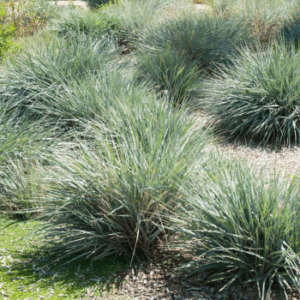
Giant Rye Grass – a wild grass that is drought tolerant and grows in bunches. This grass stays green all year with a slivery blue foliage.
Scientific Name: Leymus condensatus
Giant Wild Rye (Leymus condensatus) · iNaturalist
Zone 1
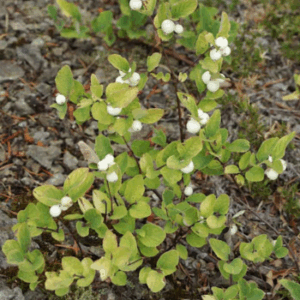
Creeping Snowberry – a perennial ground level vine that produces small white berries that smell like wintergreen.
Scientific Name: Symphoricarpos mollis
Creeping Snowberry (Symphoricarpos mollis) · iNaturalist
Zones: 1, 2, and 6

Yarrow – a flowering plant with leaves that are finely cut and sparse. Blooms between March and July.
Scientific Name: Achillea millefolium
Common Yarrow (Achillea millefolium) · iNaturalist
Zones: 1, 2, and 6

California Fuchsia – a perennial bright tubular flower with smaller leaves. Prefers dry places and blooms for most of the summer. A favorite of hummingbirds.
Scientific Name: Epilobium canum
California Fuchsia (Epilobium canum) · iNaturalist
Zones: 1 and 2
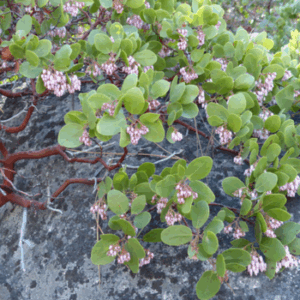
Common Manzanita – a tall shrub with crooked branches and pale pink or white flowers. A popular snack for deer, birds, ground squirrels and raccoons.
Scientific Name: Arctostaphylos viscida
Common Manzanita (Arctostaphylos manzanita) · iNaturalist
Zones: 1, 3, 4 and 5

Foothill Penstemon – an early summer blooming purple-blue flower that grows in rocky landscapes. The tubular flowers sit on the stems with narrow leaves.
Scientific Name: Penstemon heterophyllus
Bunchleaf Penstemon (Penstemon heterophyllus) · iNaturalist
Zones: 2
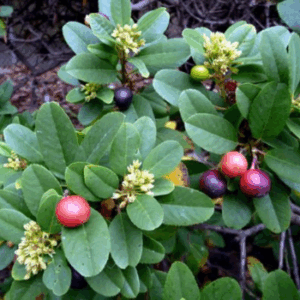
Coffeeberry – a shrub that can grow up to 10 feet tall. With small flowers that bloom in June and July and oblong leaves that are soft and gray-green. A favorite for many birds.
Scientific Name: Frangular californica (was classified as Rhamnus californica)
Coffeeberry (Frangula californica) · iNaturalist
Zones: 2 and 3

Golden Columbine – a perennial yellow flowered plant that blooms in May and early June
Scientific Name: Aquilegia chrysantha
Golden Columbine (Aquilegia chrysantha) · iNaturalist
Zone 1

CA Dutchman’s Pipe – a vine that grows near streams with heart-shaped hairy leaves. This plant is known for its blossom that looks similar to a Dutchman’s pipe. This plant hosts the black pipevine swallowtail butterfly.
Scientific Name: Aristolochia californica
California Dutchman’s Pipe (Aristolochia californica) · iNaturalist
Zones: 3 and 5

Sierra Monkey Flower – an orange flower with two “lips” that replicate the face of a monkey. This flower grows along the banks of streams and rivers and blooms during the stream.
Scientific Name: Diplacus aurantiacus
Orange Bush Monkeyflower (Diplacus aurantiacus) · iNaturalist
Zones: 1 and 2
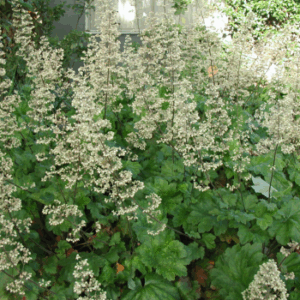
Island Alumroot – a perennial plant that is drought tolerant with large green leaves with many clusters of hairy flowers. The flowers are white or pink with tiny petals that curl away from the center.
Scientific Name: Heuchera maxima
Island Alumroot (Heuchera maxima) · iNaturalist
Zone 5

Douglas Iris – a flower that is usually purplish-blue (but could also be white or yellow) that flowers from April to June.
Scientific Name: Iris douglasiana
Douglas Iris (Iris douglasiana) · iNaturalist
Zones: 4 and 6

Western Redbud – a thin branched shrub that flowers in a colorful pink or magenta. This drought tolerant native plant blooms from March to May.
Scientific Name: Cercis occidentalis
Western Redbud (Cercis occidentalis) · iNaturalist
Zones: 4

Purple Coneflower – a purple flower with a cone shaped head. This perennial plant is a late bloomer, blooming through summer and into autumn.
Scientific Name: Echinacea purpurea
Purple Coneflower (Echinacea purpurea) · iNaturalist
Zones: 2 and 6

Oregon Grape – an evergreen shrub with dense clusters of yellow flowers. Oregon Grape blooms in early spring then produces dark bluish-black berries.
Scientific Name: Berberis aquifolium
Oregon Grape (Berberis aquifolium) · iNaturalist
Zones: 5 and 6
